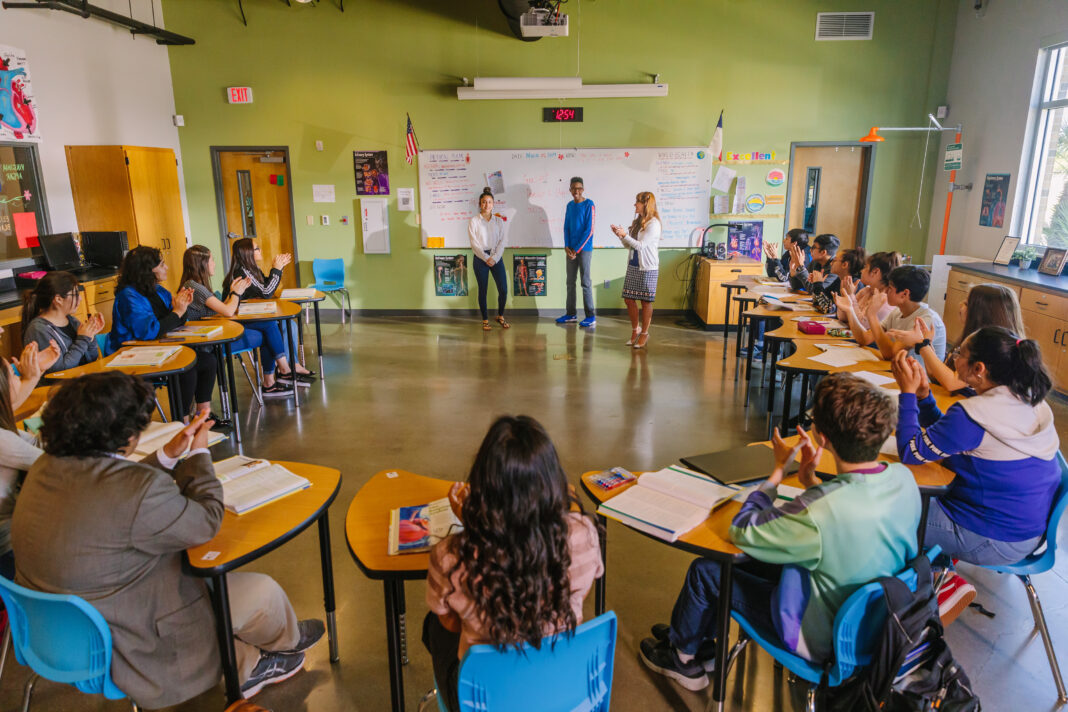HARLINGEN — They’ve spent some of their most formative years in lockdown, and now they’re returning to the real world.
For some, it is not an easy transition.
When the pandemic hit, the entire world had to mobilize to stop the spread, and children everywhere had to isolate. Everyone knew then there would be psychological consequences, and they were right.
Kids returning to school are manifesting all manner of symptoms related to the lockdown, anxiety, depression, grieving, arrested development — school officials are seeing it all.
“When they first came it was actually quite quiet in that regard,” said Sylvia Gamboa, director of guidance and counseling for the Harlingen school district.
“I think a lot of that had to do with the fact that the students were happy to be back at campus and trying to get assimilated to the new normal — or the old normal,” she said.
“By the third week we did start to see quite an increase in students exhibiting mental health issues and anxiety, depression,” she said. “A lot of the students were really coming in to the counselors’ offices and talking to them about the issues they were dealing with as they were getting assimilated back into the classroom for a full day.”
Being around so many students and teachers for a regular full day of class after 18 months of isolation has been hard. Even the most outgoing of students have had trouble returning to the fast pace and constant human contact. Add to that the burden of losing a parent or other loved one and the grief is compounded.
“You have a lot of students that are dealing with depression in regards to having lost someone due to COVID,” Gamboa said. “For other students, we are seeing an increase in anxiety, and that is true because as they come back with the fear of the pandemic and having to be around students.”
A key part of the formative phase in a person’s life is social interaction and the learning that takes place in that interaction. Kids were isolated from each other during the pandemic, and therein lies another consequence: arrested development.
“They learn a lot from each other as well as from other adults when they’re around the teachers, the staff at the campus, and so a lot of them were missing that,” Gamboa said. “Being away from those social situations in some cases for a year and a half, that social development has really been suspended.”
As an example, she pointed out that ninth graders were last in a normal full day of school in sixth grade.
“You can use any grade level as an example,” she said. “When a student who is now in fourth grade, a student who is now in eleventh grade.”
To remedy this, the district has implemented character development programs at both the elementary and secondary level.
“It has a curriculum in regards to character development and social interaction, relationship building, self awareness, responsible decision making skills,” she said. “These are very important components that are part of our teachings to our students and helping them to get the background they need to make responsible decisions.”
Educators at home and elsewhere expressed concern early on about kids being in abusive home environments. For some kids, school was their only safe place, and that’s where teachers and administrators could watch for signs of abuse.
During the pandemic, reports of child abuse declined because there was no opportunity to report. Now the kids are back in school, reports of possible child abuse are on the rise.
“We’re really trying to do a lot of check-ins with our students,” Gamboa said. “We’re keeping track of our students that may have certain situations at home that we feel needs to be monitored so we can make sure that our students are doing well and they are safe.”




